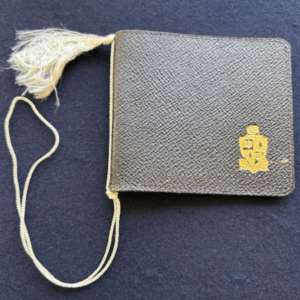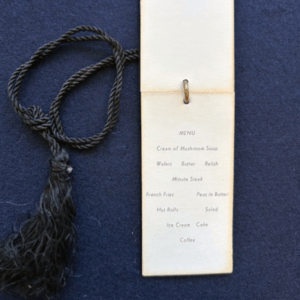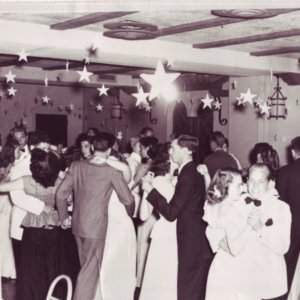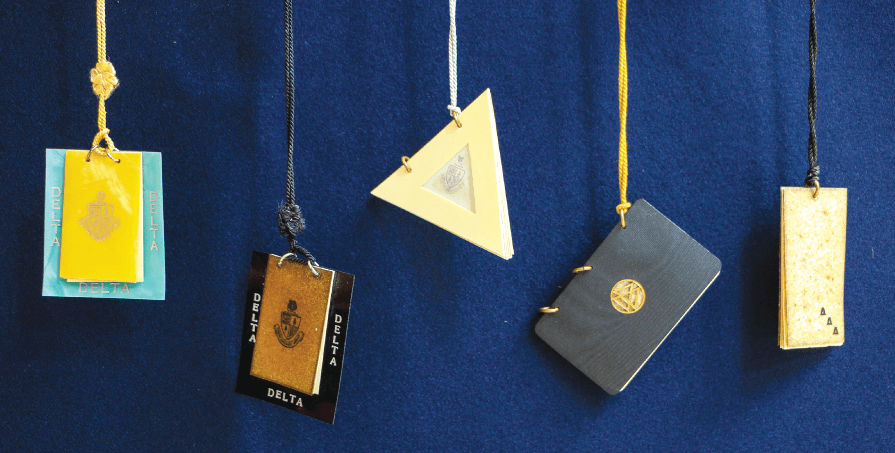The idea conjures up visions of a bygone era. Young ladies whirl with their partners across the dance floor with tiny, colorful cards fluttering from their wrists. Tri Delta’s archives is fortunate to have a large and varied selection of these cards, received from members and collegiate chapters over the years. But what were dance cards, and how and why were they used?

A dance card is a little book, often with a decorative cover, tied together with a cord that could slip onto a lady’s wrist. Some cards conveniently included a small pencil attached. The inside pages of the booklet might list the date, time and place of the dance and who sponsored it. Several of the inner pages would have blank numbered or annotated lines, which ladies used to note their dance partners for a given dance. The booklet might include the menu if the occasion included a dinner. Dance card covers were created from various materials, ranging from simple card stock with hand-drawn artwork to more elaborate designs integrating metal, cloth, leather or celluloid, depending on what was popular at a given time and the budget of the event’s sponsors.

How might one have used a dance card? The use of dance cards rose in popularity as dances became important social gatherings, and the cards had their own particular etiquette. In some places, it was common for ladies to fill their cards with partners in the days before a dance. If an unwelcome partner asked for an open dance, refusing him would have been impolite. However, if you were fortunate enough to have a full dance card, you could politely decline his offer to dance with a smile and apology. As a bonus, these little cards were a nice memento of the event. The use of these cards worked its way into our everyday language, including phrases like “pencil me in” and “my dance card is full.”
Photo: Menu detail from Delta Zeta’s 1938 Dinner Dance.

Tri Delta’s extensive collection of dance cards dates from the early 1900s to the early 1950s. Looking through the cards provides a fascinating glimpse into members’ lives. From them, we can find the events they attended, the people with whom they interacted and the dances and music that were popular at a given time. Together, the collection provides a look back at an intriguing tradition.
Photo: Phi Beta members dancing under the stars, about 1950. Photo courtesy of Harriet Hansen-Allred Bishop, Arizona.

